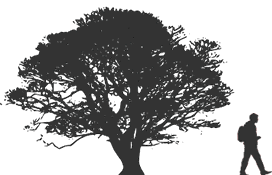Richter interviewed on YouTube by British Society of Soil Science
01 Apr 2014
News Source: British Society of Soil Science
Prof. John Quinton of Lancaster University interviews Prof. Richter for the BSSS on the changing model of soil, the topic of the 2013 Russell Lecture
ABSTRACT to 2013 Russell Lecture, "'The Changing Model of Soil', Revisited"
In 1961, the late Marlin G. Cline wrote a remarkable essay entitled,
“The Changing Model of Soil” for the 25th Anniversary Issue of the Soil
Science Society of America Proceedings. Cline was most impressed with
how geomorphology was enriching pedology, and with the increasingly
sophisticated views of soil time and of the processes of soil formation. We
revisit Cline’s general objectives by re-evaluating the changing model of
soil from the perspective of the early 21st century, and by taking stock
of the application of soil models to contemporary needs and challenges.
Today, three ongoing changes in the genetic model of soil have far-reaching
consequences for the future of soil science: (i) that soil is being transformed
globally from natural to human-natural body, (ii) that the lower boundary of
soil is much deeper than the solum historically confi ned to O to B horizons,
and (iii) that most soils are a kind of pedogenic paleosol, archival products
of soil-forming processes that have ranged widely over the life of most soils.
Together and each in their own way, these three changes in the model of
soil impact directly human–soil relations and give structure and guidance
to the science of anthropedology. In other words, human forcings represent
a global wave of soil polygenesis altering fl uxes of matter and energy and
transforming the thermodynamics of soils as potentially very deep systems.
Anthropedogenesis needs much better quantifi cation to evaluate the future of
soil and the wider environment.
Richter, D.deB. and D.H. Yaalon. 2012. Soil Science Society of America Journal 76: 766-778.
News Source:
READ MORE from British Society of Soil Science >>
News Category:
RESEARCH |
EDUCATION/OUTREACH
Discipline Tags and CZOs
Soil Science / Pedology
Biogeochemistry
Geochemistry / Mineralogy
Outreach / Education Research
National
Calhoun
Explore Further

